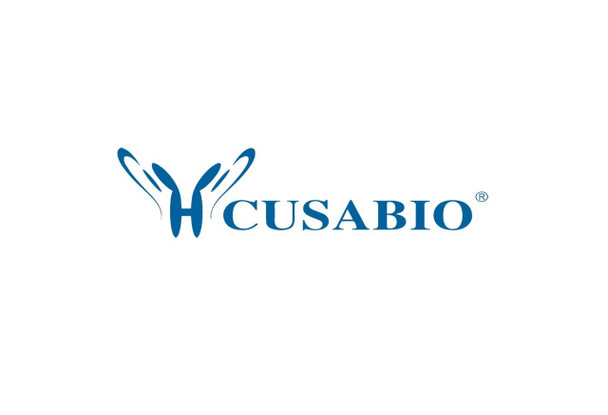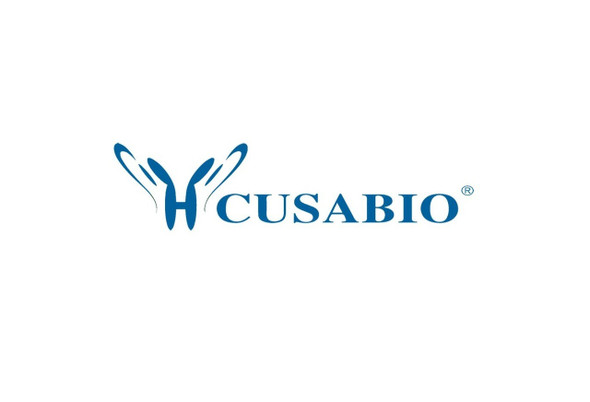Cusabio Mouse Recombinants
Recombinant Mouse BCL2/adenovirus E1B 19 kDa protein-interacting protein 3 (Bnip3) | CSB-CF002766MO
- SKU:
- CSB-CF002766MO
- Availability:
- 3 - 7 Working Days
Description
Recombinant Mouse BCL2/adenovirus E1B 19 kDa protein-interacting protein 3 (Bnip3) | CSB-CF002766MO | Cusabio
Alternative Name(s): Nip3
Gene Names: Bnip3
Research Areas: Cancer
Organism: Mus musculus (Mouse)
AA Sequence: MSQSGEENLQGSWVELHFSNGNGSSVPASVSIYNGDMEKILLDAQHESGRSSSKSSHCDSPPRSQTPQDTNRAEIDSHSFGEKNSTLSEEDYIERRREVESILKKNSDWIWDWSSRPENIPPKEFLFKHPKRTATLSMRNTSVMKKGGIFSADFLKVFLPSLLLSHLLAIGLGIYIGRRLTTSTSTF
Source: in vitro E.coli expression system
Tag Info: N-terminal 10xHis-tagged
Expression Region: 1-187aa
Sequence Info: Full Length
MW: 23.8 kDa
Purity: Greater than 85% as determined by SDS-PAGE.
Relevance: Apoptosis-inducing protein that can overcome BCL2 suppression. May play a role in repartitioning calcium between the two major intracellular calcium stores in association with BCL2. Involved in mitochondrial quality control via its interaction with SPATA18/MIEAP: in response to mitochondrial damage, participates in mitochondrial protein catabolic process (also named MALM) leading to the degradation of damaged proteins inside mitochondria. The physical interaction of SPATA18/MIEAP, BNIP3 and BNIP3L/NIX at the mitochondrial outer membrane may play a critical role in the translocation of lysosomal proteins from the cytoplasm to the mitochondrial matrix. The physical interaction of SPATA18/MIEAP, BNIP3 and BNIP3L/NIX at the mitochondrial outer membrane regulates the opening of a pore in the mitochondrial double membrane in order to mediate the translocation of lysosomal proteins from the cytoplasm to the mitochondrial matrix. Plays an important role in the calprotectin (S100A8/A9)-induced cell death pathway
Reference: "Nix and Nip3 form a subfamily of pro-apoptotic mitochondrial proteins." Chen G., Cizeau J., Vande Velde C., Park J.H., Bozek G., Bolton J., Shi L., Dubik D., Greenberg A. J. Biol. Chem. 274:7-10(1999)
Storage: The shelf life is related to many factors, storage state, buffer ingredients, storage temperature and the stability of the protein itself. Generally, the shelf life of liquid form is 6 months at -20?/-80?. The shelf life of lyophilized form is 12 months at -20?/-80?.
Notes: Repeated freezing and thawing is not recommended. Store working aliquots at 4? for up to one week.
Function: Apoptosis-inducing protein that can overcome BCL2 suppression. May play a role in repartitioning calcium between the two major intracellular calcium stores in association with BCL2 (By similarity). Involved in mitochondrial quality control via its interaction with SPATA18/MIEAP
Involvement in disease:
Subcellular Location: Mitochondrion, Mitochondrion outer membrane, Single-pass membrane protein
Protein Families: NIP3 family
Tissue Specificity:
Paythway:
Form: Liquid or Lyophilized powder
Buffer: If the delivery form is liquid, the default storage buffer is Tris/PBS-based buffer, 5%-50% glycerol. If the delivery form is lyophilized powder, the buffer before lyophilization is Tris/PBS-based buffer, 6% Trehalose, pH 8.0.
Reconstitution: We recommend that this vial be briefly centrifuged prior to opening to bring the contents to the bottom. Please reconstitute protein in deionized sterile water to a concentration of 0.1-1.0 mg/mL.We recommend to add 5-50% of glycerol (final concentration) and aliquot for long-term storage at -20?/-80?. Our default final concentration of glycerol is 50%. Customers could use it as reference.
Uniprot ID: O55003
HGNC Database Link: N/A
UniGene Database Link: UniGene
KEGG Database Link: KEGG
STRING Database Link: STRING
OMIM Database Link: N/A










